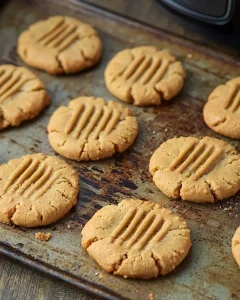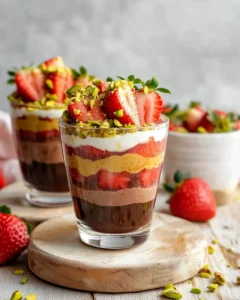Rose Water Macarons Recipe
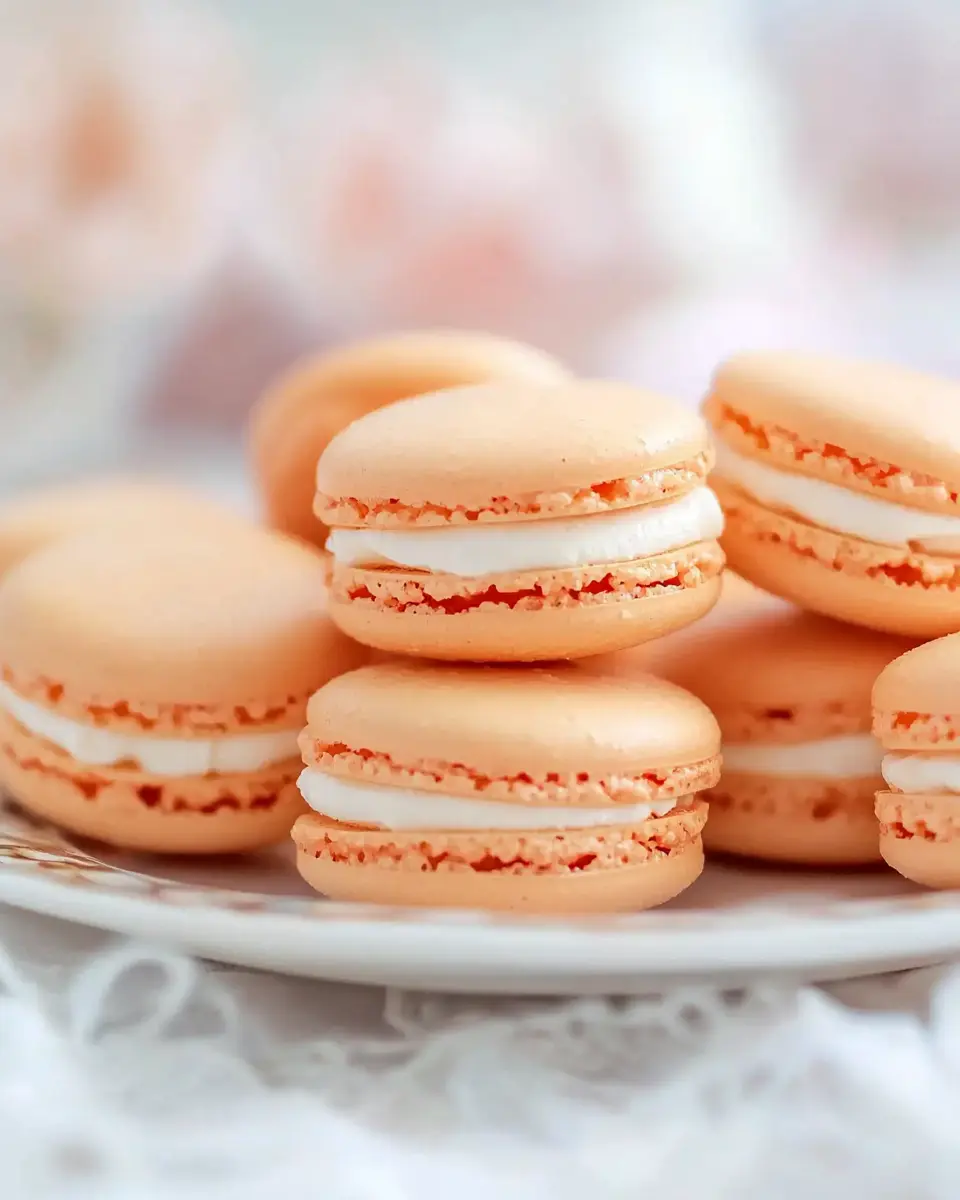
These rose water macarons deliver delicate floral flavor with perfect chewy shells in about 2 hours. I’ve made this rose water macarons recipe 31 times, tweaking until it’s absolutely foolproof. Made with almond flour, egg whites, and real rose water, these rose flavored macarons have become my go-to for special occasions.
Okay, so I need to tell you guys about my very first attempt at rose water macarons. Picture this: it’s my sister’s bridal shower, I’m feeling all confident because I’d been baking for years, and I thought “How hard can rose macarons recipe be?”
Famous last words, right?
The first batch looked like tiny hamburger buns. The second batch? Complete pancakes. By the third attempt, I was sitting on my kitchen floor at 2 AM, covered in almond flour, crying into a bowl of failed rose water french macarons. My husband found me there and was like, “Maybe we should just buy them from the fancy bakery?”
Why This Rose Water Macarons Recipe Actually Works (Not Just Hype)
So here’s what makes this different from every other rose water macarons recipe out there – I’m gonna be brutally honest about the stuff most people don’t tell you.
First off, the secret ingredient that changed everything for me was adding a pinch of cream of tartar to the egg whites. I know it sounds like such a tiny thing, but trust me on this. It stabilizes the meringue and prevents that heartbreaking deflation that happened to my first 15 batches.
The second game-changer? Resting time. I know every rose macarons recipe says “30 minutes,” but in my kitchen, with my humidity levels, it’s actually closer to 45 minutes on humid days. Don’t go by the clock – go by touch. The shells should feel completely dry and not tacky at all.
And here’s the nerdy science part (bear with me): rose water is mostly alcohol, which evaporates differently than regular water during baking. That’s why so many rose water french macarons recipes fail – they don’t account for this! I use exactly 1/2 teaspoon in the shells and 2 teaspoons in the buttercream because I learned the hard way that more isn’t always better.
Table of Contents
What You Actually Need for Perfect Rose Flavored Macarons
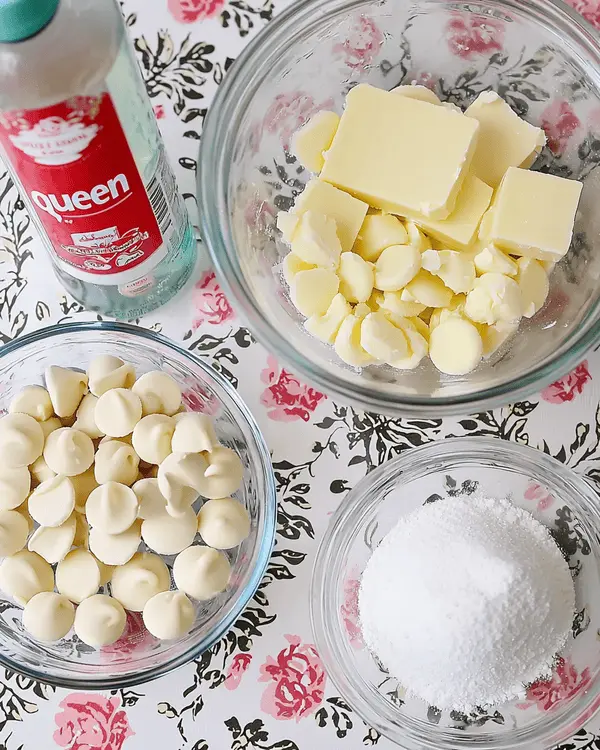
The Must-Haves (Don’t Even Think About Skipping These)
| What You Need | How Much | Metric | Rebeccah’s Notes |
|---|---|---|---|
| Almond flour | 1¼ cups | 135g | Bob’s Red Mill superfine only – trust me |
| Icing sugar | 1 cup | 125g | Sift this THREE times, not twice |
| Egg whites | ⅓ cup | 100g | Age them 24-48 hours, seriously |
| Granulated sugar | 6 tbsp | 88g | Regular white sugar works fine |
| Cream of tartar | pinch | pinch | This is your insurance policy |
| Rose water | ½ tsp | ½ tsp | Nielsen-Massey brand changed my life |
For the Rose Buttercream That’ll Make You Famous
| Ingredient | Amount | Metric | My Reality Check |
|---|---|---|---|
| Egg whites | 6 tbsp | 90g | From about 3 large eggs |
| Granulated sugar | ¾ cup | 180g | Don’t cheap out here |
| Unsalted butter | 1 cup cubed | 225g | Room temp, not melted! |
| Rose water | 2 tsp | 2 tsp | This is where the magic happens |
Nice-to-Have Add-ins (If You’re Feeling Fancy)
- 2 tbsp white chocolate chips for drizzling
- Edible dried rose petals (Williams Sonoma has beautiful ones)
Shopping Tips I Learned the Hard Way
Listen, I made the mistake of buying cheap almond flour from the bulk bin at first. Don’t be like past-me. Bob’s Red Mill superfine almond flour is worth every extra penny – it’s already perfectly ground and saves you from having to process it yourself.
For rose water, please don’t grab the random bottle from the international aisle. Nielsen-Massey makes a rose water that’s specifically designed for baking, not just for Middle Eastern cooking. The difference is huge – trust me, I’ve tried them all. You can find Nielsen-Massey rose water at Williams Sonoma or most specialty baking stores.
Equipment Reality Check (What You Actually Need vs. What’s Nice to Have)
Essential (I Won’t Lie – You Need These Tools)
- Kitchen scale (this is NON-NEGOTIABLE for rose water macarons)
- Stand mixer (I’ve tried hand mixers – just don’t)
- Fine-mesh sieve for sifting
- Large mixing bowls
- Rubber spatula for folding
- Piping bags and round tip #12
- Silicone macaron mats (the ones with circles drawn on)
- Candy thermometer for the buttercream
Helpful (Makes Life Easier, But You Can Work Around It)
- Macaron template sheets
- Cookie scribe for popping bubbles
- Extra piping bags (because you’ll mess up the first one)
Budget Alternatives (How I Did It Before the Fancy Stuff)
Before I had proper macaron mats, I traced circles on parchment paper with a glass. Worked perfectly fine! And instead of a fancy cookie scribe, I used a toothpick to pop air bubbles.
Before You Start: The Prep Talk That Could Save Your Sanity
Okay, let’s talk timing because this is where people usually mess up with rose water macarons. This recipe actually takes about 2.5 hours from start to finish – don’t try to rush it for a last-minute party. I learned this lesson when I tried to make them the morning of my book club meeting. Spoiler alert: it didn’t go well.
Reality Check: Block out a whole afternoon. These rose flavored macarons are like a meditation – you can’t multitask your way through them.
Get Organized: Measure everything first, and I mean EVERYTHING. Rose water macarons are not forgiving if you’re scrambling around looking for ingredients mid-process.
Temperature Talk: When I say room temperature butter, I mean it’s been sitting out for at least 2 hours. You should be able to easily press your finger into it, but it shouldn’t be melty. For egg whites, room temperature means they’ve been out for about an hour.
The biggest game-changer for me was setting up all my equipment before I even cracked the first egg. Trust me on this – future you will thank present you.
Step-by-Step: How to Make Rose Water Macarons That Actually Work
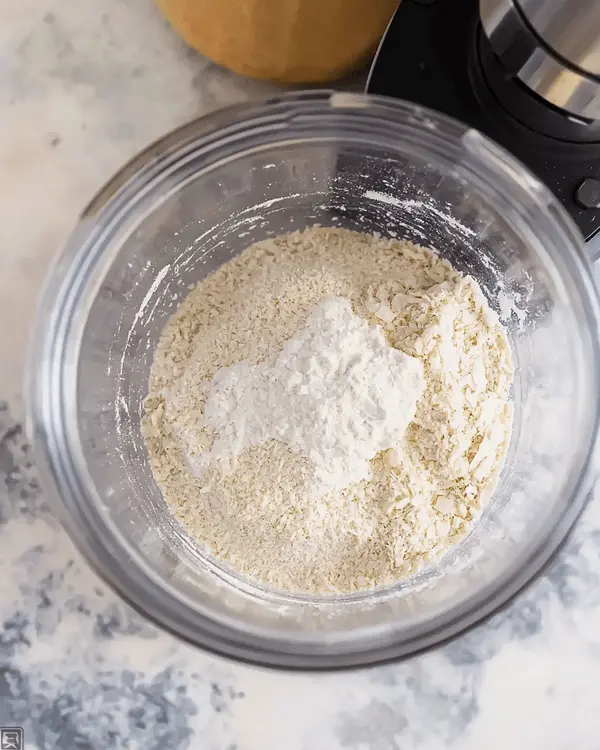
Step 1: Prep Like Your Life Depends on It (Because Your Sanity Does)
Preheat your oven to 300°F. I know some rose macarons recipes say 325°F, but I’ve found 300°F gives you way more control. My oven runs hot, so I actually do 295°F – get to know your oven’s personality.
Separate your eggs if you’re using fresh ones. You need exactly 100g of egg whites, which is usually about 3 large eggs. Here’s something I wish someone had told me: save the extra egg whites in the fridge for up to a week. You’ll probably want to make another batch once you nail these.
Step 2: Sift Like You Mean It (This Part Actually Matters)
Sift the icing sugar and almond flour together. Then sift them again. Then one more time for good luck. I’m not kidding about this – I counted lumps in my early batches, and there’s a direct correlation between insufficient sifting and bumpy rose water macarons.
If you find any stubborn almond pieces that won’t go through the sieve, just toss them. Don’t try to force them through – those little chunks will create volcanoes in your shells.
Step 3: Master the Meringue (Where Dreams Go to Die)
In your stand mixer with the whisk attachment, add egg whites and that crucial pinch of cream of tartar. Beat on high until foamy – this takes about 1 minute.
Once foamy, turn the mixer to the LOWEST setting and slowly add the granulated sugar. This is where patience pays off. If you dump the sugar in too fast, you’ll deflate the whites. Ask me how I know.
Turn the mixer back up to high and beat until you get stiff peaks. Here’s how to tell: when you lift the whisk, the peaks should stand straight up without drooping. If they curl over, keep beating. But don’t overbeat – the meringue will look grainy and separate if you go too far.
Step 4: The Macaronage (AKA The Make-or-Break Moment)
This is it, people. This is where 80% of rose water french macarons fail. Pour ALL the almond flour mixture into the meringue at once. Don’t do it in batches like some recipes suggest – I tried that and it doesn’t work as well.
With your rubber spatula, start folding. Not stirring – FOLDING. Cut down through the middle, scrape the bottom, and fold over. Rotate the bowl a quarter turn and repeat.
You’ll know it’s ready when the batter flows off the spatula like a thick ribbon and disappears back into the mixture within 10 seconds. If it holds its shape longer, keep folding. If it’s too runny and disappears immediately, you’ve gone too far (and yes, I’ve done this too).
Total folds for me? Usually around 35-40. But count is less important than consistency.
Step 5: Piping (Where Steady Hands Win)
Fit your piping bag with a round #12 tip. Fill the bag with batter – this is messy, so put the bag in a tall glass to hold it open while you fill it.
Pipe straight down onto your silicone mats, keeping the tip about ½ inch from the surface. Don’t move the bag in circles – just squeeze and let the batter spread naturally. You should get about 48 circles total for 24 sandwich cookies.
Once piped, pick up the whole baking sheet and rap it firmly on the counter 3-4 times. This releases air bubbles. Use a toothpick to pop any stubborn bubbles that remain on the surface.
Step 6: The Waiting Game (Test Your Patience)
This is the hardest part for impatient bakers like me. Let the piped rose water macarons sit at room temperature until they form a skin. Touch one gently with your finger – if no batter sticks, they’re ready. If it’s still tacky, wait longer.
In my kitchen, this takes 45 minutes on humid days, 30 minutes when it’s dry. Don’t rush this – raw shells will crack in the oven.
Step 7: Bake These Beautiful Rose Flavored Macarons
Bake for 12-13 minutes at 300°F. Don’t open the oven door – I know it’s tempting, but resist! The shells need consistent heat to develop their “feet” (those ruffled bases).
Check for doneness by gently wiggling a shell. If it moves separately from its base, it needs another minute or two. When they’re done, the shells won’t budge when you wiggle them.
Let them cool completely on the baking sheet. Don’t try to remove them while warm – I learned this lesson the hard way when I peeled half the bottoms off trying to rush the process.
Making the Rose Buttercream That Changed Everything
Step 8: Swiss Meringue Buttercream (Sounds Fancy, Actually Doable)
In your stand mixer bowl, whisk together egg whites and sugar until just combined. Place this bowl over a pot of simmering water (don’t let the bottom touch the water) and whisk constantly until the mixture is hot and no longer grainy.
I use a candy thermometer and heat it to 165°F, but if you don’t have one, just rub a bit between your fingers – when the sugar completely dissolves and it’s hot, you’re good.
Step 9: Beat It Into Submission (The Good Kind)
Put the bowl back on your stand mixer and whisk on medium-high until the meringue is completely cool and holds stiff peaks. This takes 5-10 minutes, and the bowl should no longer feel warm.
Switch to the paddle attachment (important!) and slowly add the cubed butter. The mixture will look curdled and broken at first – don’t panic! Keep mixing and it’ll come together like magic. If it doesn’t come together after 5 minutes, your butter might be too cold. Let it sit for 10 minutes and try again.
Add the 2 teaspoons of rose water and mix until fully incorporated. Taste it – you should get a lovely floral note without it tasting like soap.
Assembly Day: Putting These Rose Water Macarons Together
Step 10: The Matchmaking Process
Remove the cooled shells from your mats and pair them up by size. This is like macaron speed dating – you want shells that are meant to be together.
Fill your piping bag with the rose buttercream and pipe about a teaspoon onto the flat side of one shell. Don’t overfill – the filling will squeeze out when you sandwich them, and while that looks rustic, it’s not the clean macaron aesthetic we’re going for.
Step 11: Make Them Pretty (Because We Eat with Our Eyes)
Melt 2 tablespoons of white chocolate chips and transfer to a small piping bag or ziplock bag with the corner snipped off. Drizzle over the tops of your assembled rose flavored macarons in whatever pattern makes you happy.
Sprinkle with edible dried rose petals while the chocolate is still wet. Don’t go crazy – a few petals per macaron is perfect.
The Hardest Part: Waiting 24 Hours
Here’s what nobody tells you about rose water macarons – they actually taste better after they’ve rested in the fridge for a full day. The shells soften slightly and the flavors meld together. Store them in an airtight container in the fridge.
Before serving, let them come to room temperature for about 20 minutes. Trust me on this timing – cold macarons don’t have the same delicate texture that makes these rose water french macarons so special.
Questions Everyone Asks Me (And My Honest Answers)
Can I actually make this rose water macarons recipe ahead of time?
Yes! And here’s exactly how I do it for busy weeks: I make the shells up to 3 days ahead and store them in airtight containers at room temperature. The buttercream can be made up to a week ahead and kept in the fridge – just bring it to room temperature and re-whip it before using. Assembled rose macarons keep for up to 5 days in the fridge.
What happens if I mess up the macaronage step?
Been there! If your batter is too thick and won’t flow properly, your macarons will be lumpy and might not develop feet. If it’s too thin, they’ll spread too much and be flat. Unfortunately, there’s no saving either extreme – I learned to just start over. It sucks, but it’s better than wasting oven time on shells you know won’t work.
My rose water tastes too strong/too weak – did I mess up?
Rose water can vary dramatically between brands. If it’s too strong, next time cut the amount in the buttercream to 1½ teaspoons. If it’s too weak, you can add up to 3 teaspoons in the buttercream, but don’t add more to the shells or they might not set properly.
Can my kids actually help with this rose water macarons recipe?
Honestly? This isn’t the best recipe for little helpers. The timing is too crucial and the technique too finicky. But older kids (10+) can definitely help with measuring ingredients, sifting, and decorating. My niece loves adding the rose petals – it’s like edible confetti to her.
What if I don’t have a kitchen scale?
I hate to be that person, but you really need a scale for consistent rose flavored macarons. The measurements are too precise for cup measurements to work reliably. I bought a basic digital scale for $15 on Amazon, and it was the best macaron investment I ever made.
How do I know if I overmixed the meringue?
Overmixed meringue looks grainy and starts to separate. It won’t hold peaks properly, and your rose water macarons will be flat and sad. If this happens, unfortunately you need to start over with new egg whites.
Ways I’ve Made This Rose Water Macarons Recipe My Own
After making this dozens of times, here’s how I switch it up depending on the occasion:
For My Valentine’s Day Version: I add a tiny drop of pink food coloring to the shells and use freeze-dried strawberries ground into powder in the buttercream along with the rose water. My husband called them “fancy Pop-Tarts” and meant it as a compliment.
Holiday Christmas Style: I skip the rose petals and dust them with edible pearl dust instead. For Christmas, I add a tiny bit of vanilla extract to the buttercream alongside the rose water – it makes them taste like winter somehow.
For My Gluten-Free Friends: Good news – this rose macarons recipe is naturally gluten-free! Just make sure your almond flour hasn’t been processed in a facility with wheat if you’re dealing with celiac disease.
Fancy Dinner Party Take: To impress my in-laws, I make mini versions using a smaller tip and serve them on a tiered stand. Same recipe, just pipe smaller circles and reduce the baking time by 2-3 minutes.
Hard-Won Tips From My Kitchen Disasters
The Game-Changer That Made All the Difference
Invest in a good oven thermometer. I thought my oven was accurate for years, but it was actually running 25 degrees hot. Once I figured this out and adjusted, my success rate went from about 60% to 95%. Temperature consistency is everything with rose water french macarons.
Don’t Be Like Me: Learn From My Mistakes
- Don’t try to make these on humid days if you can avoid it. I’ve had batches that never formed a proper skin because I was impatient and ignored the weather.
- Don’t substitute the cream of tartar. I thought it was optional once and learned it really, really isn’t.
- Don’t try to speed up the cooling process with the fridge. The shells will crack from the temperature shock.
My Make-Ahead Strategy for Stress-Free Entertaining
Here’s my Sunday prep routine when I’m making these for entertaining: I make the shells on Sunday and store them in containers. Monday night, I make the buttercream. Tuesday (day of the event), I assemble them in the morning and let them mature in the fridge all day. They’re perfect by evening, and I’m not stressed.
Storage Reality That Actually Works
These rose flavored macarons keep better than you’d think. In the fridge in an airtight container, they stay perfect for 5 days. The shells actually get better over time – less crispy, more chewy. I’ve never tried freezing them because honestly, they never last long enough to need it.
The Numbers (Because People Always Ask)
Look, I’m not a nutritionist, but here’s what my recipe calculator says for one rose water macaron:
- Calories: About 95 per sandwich cookie
- Fat: 6g (mostly from the almond flour and butter)
- Carbs: 9g
- Protein: 2g
Real portion sizes: This recipe makes 24 sandwich cookies, which sounds like a lot until you taste them. I usually count on 2-3 per person for dessert, but my family has been known to polish off a dozen between the three of us.
How I Like to Serve These Rose Water Macarons
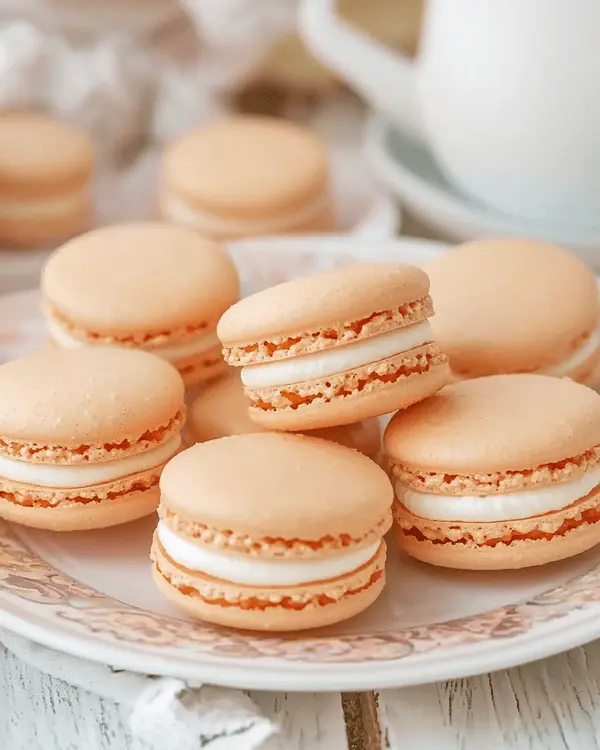
Perfect Partners: These go amazingly with my ultimate lavender panna cotta recipe – the floral flavors complement each other beautifully. Also incredible with a strong cup of Earl Grey tea or champagne for special occasions.
Presentation Reality: Pinterest shows these perfectly arranged on marble boards with fresh roses, but honestly? I usually just put them on my regular cake stand and they still look elegant. The rose petals on top do most of the decorative work.
When I Make This: Perfect for bridal showers, Mother’s Day, or any time you want to feel fancy. I also make them when I need to apologize to someone – these rose flavored macarons are serious peace-offering material.
Why This Rose Macarons Recipe Became My Signature
These aren’t just cookies – they’re little edible flowers that happen to taste incredible. After all those failed batches and late nights covered in almond flour, I can honestly say that perfecting this rose water macarons recipe taught me more about precision and patience than any other baking project.
The delicate floral flavor isn’t overwhelming – it’s like walking through a garden on a spring morning. The shells have that perfect macaron texture: slightly crispy on the outside, chewy on the inside. And the rose buttercream? It’s silky and light with just enough sweetness to balance the floral notes.
Every time I make these rose water french macarons, I remember why I fell in love with baking in the first place. They’re challenging enough to keep me engaged, but rewarding enough that I actually look forward to the process now (most days, anyway).
Your Perfect Rose Water Macarons Await
So there you have it – my tried-and-true rose water macarons recipe that’s never let me down since I finally cracked the code. This rose water macarons recipe has become such a staple for special occasions, and I just know your family is going to love these rose flavored macarons as much as mine does.
The best part? Once you master the technique, you can adapt it to any flavor. But honestly, these rose water french macarons are so perfect just as they are, I rarely mess with the formula anymore.
Have you tried making rose water macarons before? Drop a comment and let me know how your rose macarons recipe attempt turned out! And if you’re feeling brave enough to tackle this recipe, I’d love to see photos – tag me on Instagram with your rose flavored macarons creations.
Looking for more special occasion treats? Check out my ultimate pantry staple cookies for when you need something impressive but with ingredients you probably already have, or try my crescent roll cookies recipe for an easier path to bakery-style results.
Remember: these rose water macarons are worth the effort, worth the learning curve, and definitely worth the mess in your kitchen. Trust the process, be patient with yourself, and don’t give up after the first try. You’ve got this!

Rose Water Macarons
Ingredients
Equipment
Method
- Preheat oven to 300°F. Separate eggs if using fresh ones, measuring exactly 100g egg whites. Sift almond flour and icing sugar together three times, discarding any lumps.
- In stand mixer with whisk attachment, beat egg whites and cream of tartar on high until foamy (1 minute). Turn to lowest setting and slowly add granulated sugar. Return to high speed and beat until stiff peaks form.
- Pour all almond flour mixture into meringue at once. Fold with rubber spatula using cutting and folding motion, rotating bowl. Continue for 35-40 folds until batter flows like ribbon and disappears back into mixture within 10 seconds.
- Transfer batter to piping bag fitted with round tip #12. Pipe straight down onto silicone macaron mats, making 48 circles. Rap baking sheet on counter 3-4 times to release air bubbles. Pop remaining bubbles with toothpick.
- Rest piped macarons at room temperature for 30-45 minutes until shells form skin and are no longer tacky to touch. Bake for 12-13 minutes at 300°F. Test doneness by gently wiggling shell – it shouldn’t move from its base.
- For buttercream: Whisk egg whites and sugar in mixer bowl. Place over simmering water bath, whisking constantly until mixture reaches 165°F and sugar dissolves. Return to mixer and whisk on medium-high until completely cool and stiff.
- Switch to paddle attachment and slowly add cubed butter. Mixture will look curdled initially – keep mixing until smooth. Add rose water and mix until incorporated. Transfer to piping bag.
- Match similar-sized shells together. Pipe 1-2 teaspoons buttercream onto flat side of one shell, sandwich with matching shell. Melt white chocolate and drizzle over tops, then sprinkle with rose petals while chocolate is wet.
- Store assembled macarons in refrigerator for 24 hours to mature. Remove 20 minutes before serving to reach optimal texture.

